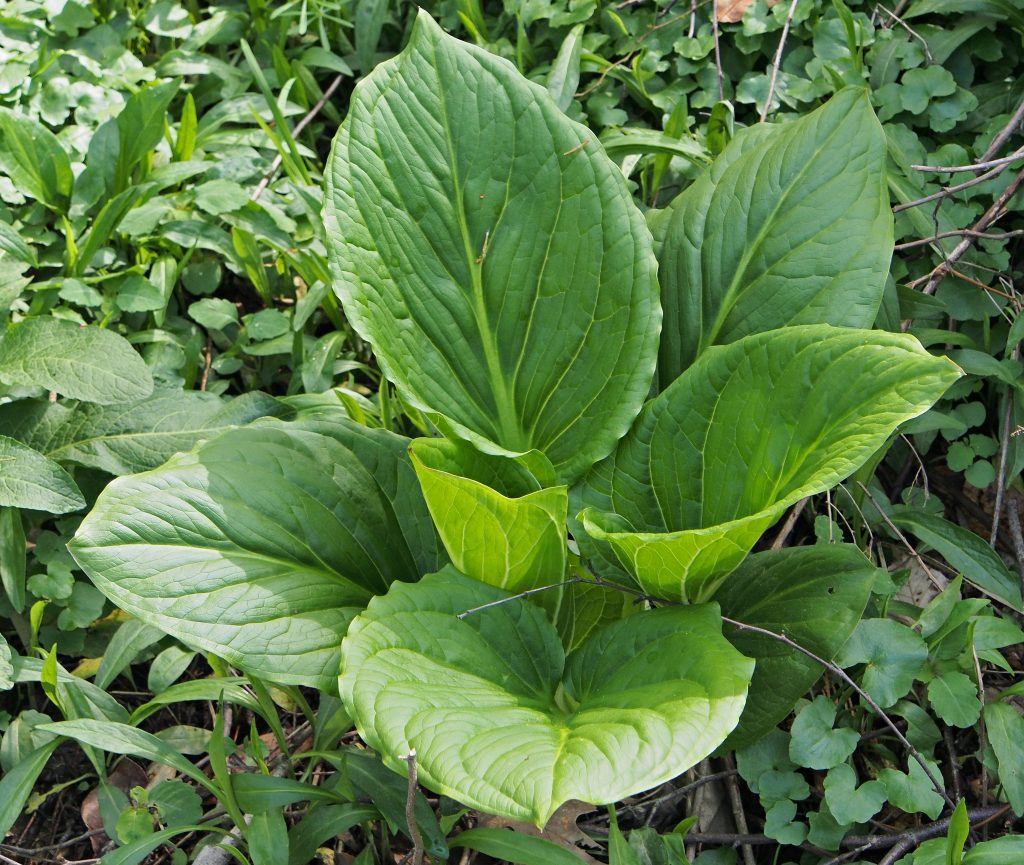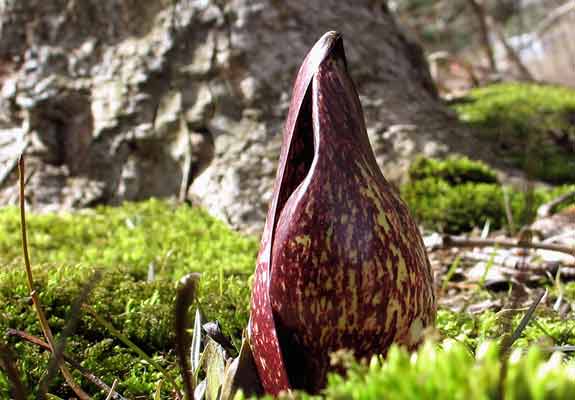
Skunk cabbage may not be the first plant that comes to mind when considering plants for your plant zoo but it offers a lot and is ripe for consideration. Also known as swamp cabbage, clumpfoot cabbage, foetid pothos and polecat weed, this herbaceous perennial offers lush foliage all summer and an inflorescence that is unique and amazing. In early spring before the leaves emerge, small flowers are produced on a 2″ long, knob-like, pale yellow to dark purple structure called a spadix. Around the spadix is a a large brownish-purple and green, mottled, shell-like spathe. The flowers can produce heat so that the spathe and spadix can emerge through snow cover. After flowering, a basal rosette of leaves emerges and consists of large, oval, dark green leaves with conspicuous venation that give them a quilted look. The flowers and bruised leaves emit an unpleasant skunk like odor that attracts pollinators and may deter larger animals that might eat or damage the plant. The root and the unfurled leaves are edible with no unpleasant taste or odor after cooking. Skunk cabbage is native to wetlands and moist slopes of eastern North America and a good choice for native plant, wetland, and woodland gardens as well as a plant zoo. Photo Credit Wikimedia Commons

Type: Herbaceous perennial
Size: 2-3′
Bloom Color : Brownish purple mottled with green
Bloom Time: Early spring
Light: Part sun to light shade
Soil: Humusy, consistently wet
Hardiness: Zones 4-7
Photo Credit: Wikipedia